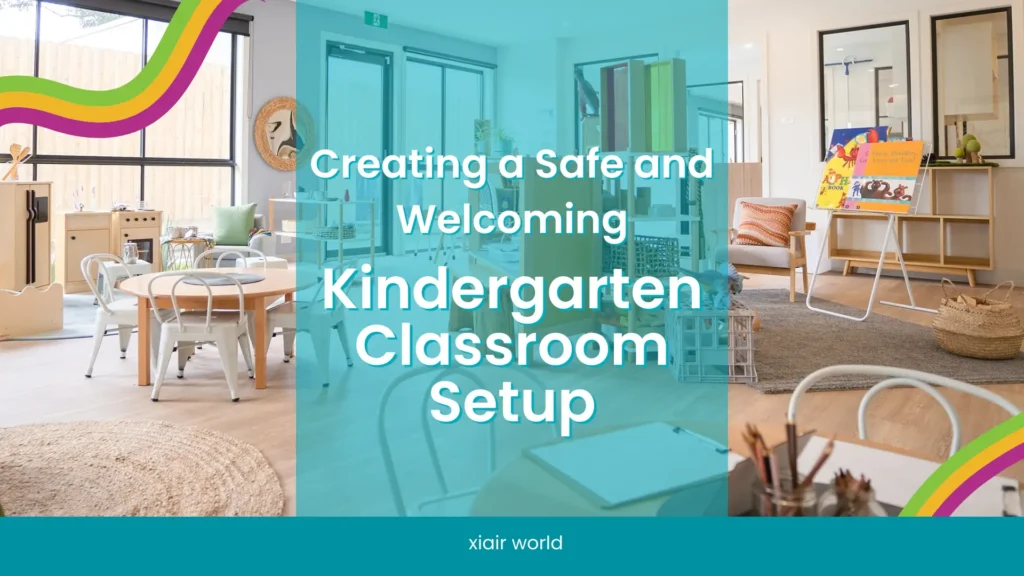Are you struggling to create an engaging and efficient kindergarten classroom setup? It’s a common challenge for many educators and administrators. Setting up a kindergarten classroom effectively can significantly impact young children’s learning experience and overall development.
Creating an ideal kindergarten classroom setup involves strategic planning and thoughtful organization. From furniture arrangement to learning materials, every detail matters in fostering a conducive learning environment for kids. Here are ten essential tips for setting up a perfect kindergarten classroom.
Let’s delve deeper into these tips to ensure your kindergarten classroom setup is functional and inspiring.
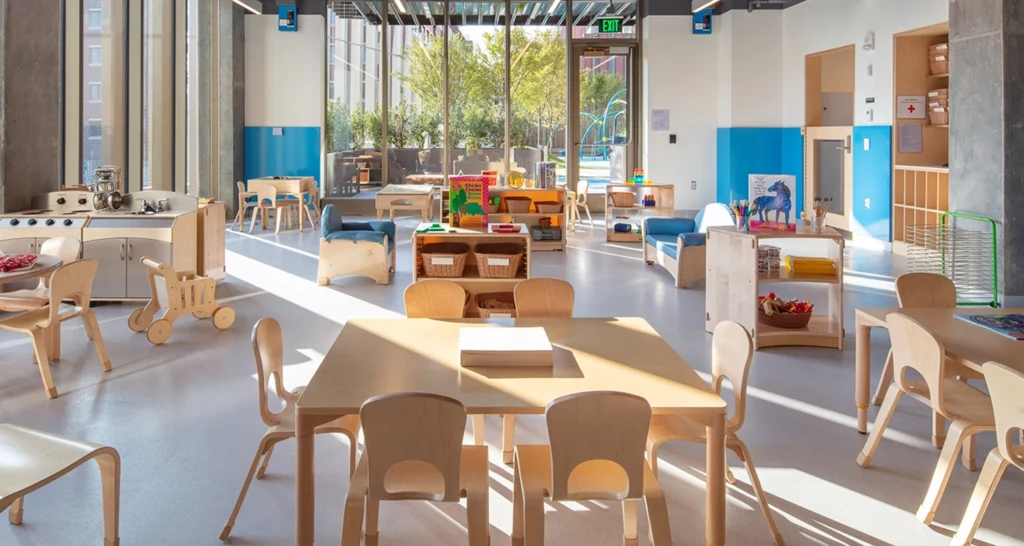
What Makes a Great Kindergarten Classroom?
Creating an excellent kindergarten classroom setup requires thoughtful planning and attention to detail. The classroom should be a safe, welcoming space that encourages children to explore, learn, and grow. Safety is paramount, so ensuring that furniture and materials are child-friendly and hazard-free is essential. Additionally, the environment should be engaging, with bright colors and stimulating decorations that capture children’s attention and inspire their curiosity.
A successful kindergarten classroom setup also needs to be functional. This means organizing the space to facilitate easy movement and access to materials. Each classroom area should serve a specific purpose, whether for reading, arts and crafts or play. This structure helps children understand the expectations for each activity and allows them to transition smoothly between tasks.
The classroom should promote independence and self-reliance. By making materials easily accessible and providing clear labels and instructions, children can learn to manage their activities and take responsibility for their learning environment. This not only supports their cognitive development but also fosters essential life skills.
To create a vibrant and engaging preschool classroom setup, consider a combination of flexibility and creativity. It’s crucial to design an environment that caters to various learning styles and developmental needs. For example, use multi-functional furniture that can easily be reconfigured for different activities. By creating thematic zones, such as an art station, quiet reading nook, or sensory play zone, children are encouraged to explore various concepts while developing critical skills. You might also consider integrating Montessori preschool classroom setup ideas, such as open shelving for easy access to learning tools, allowing children to choose their own activities and fostering independence.
Crafting a Purposeful Preschool Classroom Layout
A successful preschool classroom setup goes beyond aesthetics—it’s a balance of creativity, functionality, and safety. Each element should work cohesively to create a space where children can academically and emotionally thrive. Here’s how:
- Encouraging Independence: Use low shelves for toys and books, allowing children to choose activities freely. This setup supports self-directed learning and fosters responsibility.
- Optimizing Traffic Flow: Arrange furniture to create distinct pathways, minimizing chaos and ensuring smooth transitions between zones.
- Enhancing Engagement: Vibrant colors, engaging wall displays, and interactive bulletin boards can make the space lively yet purposeful.
The key for anyone searching for preschool classroom setup ideas is to design a welcoming environment while prioritizing learning outcomes.
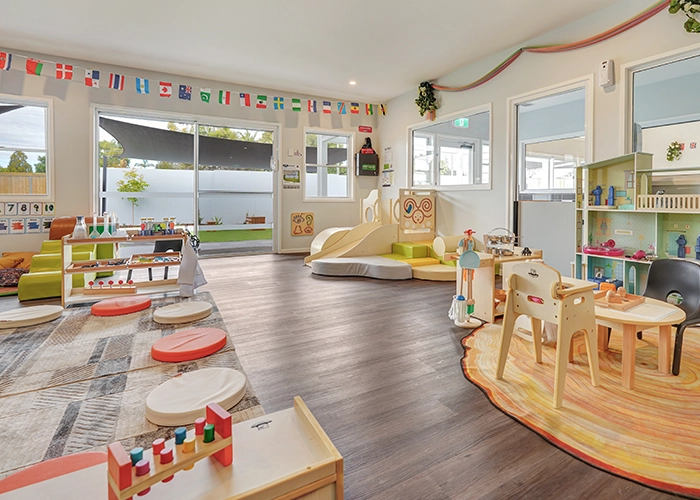
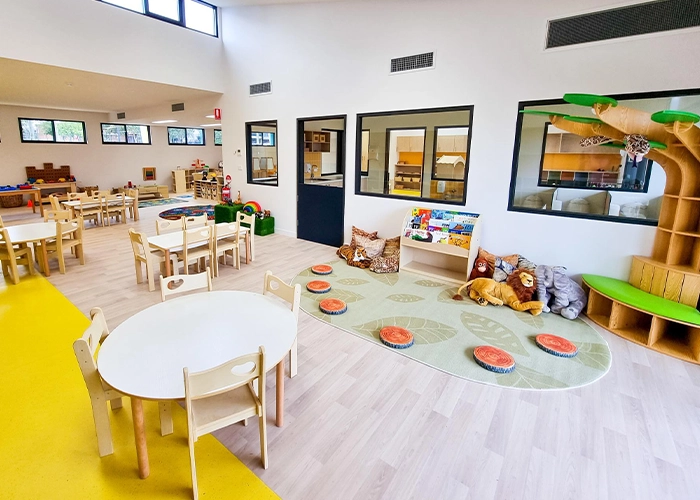
How Should Arrange the Furniture in a Kindergarten Classroom?
Arranging furniture effectively is crucial for an optimal kindergarten classroom setup. The right arrangement can create a functional, engaging space supporting various activities and learning styles. Here are some key strategies to consider:
Maximize Space Utilization
To maximize space utilization, arrange furniture to create distinct learning zones such as reading corners, art stations, and play areas. This organization helps manage activities efficiently and provides structure to the classroom. Each zone should be clearly defined to help children understand the purpose of each area. For example, a dedicated art station can include tables for drawing and painting, while a play area might have space for building blocks and toys. By creating specific zones, you can ensure that every part of the classroom is used effectively.
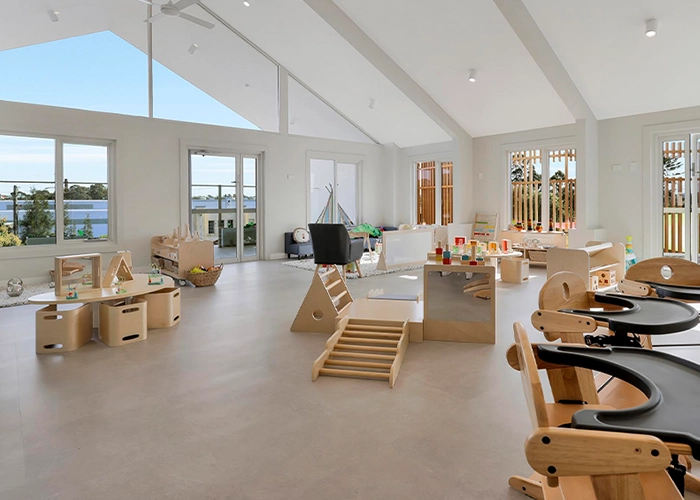
Ensure Safety and Accessibility
Safety and accessibility are paramount in a kindergarten classroom setup. Position furniture to allow easy movement and access for both children and teachers. Ensure that all materials are within reach of the kids to promote independence. This means placing shelves and storage units at child height and ensuring pathways are clear of obstructions. Additionally, consider placing heavy or potentially dangerous items to prevent accidents. An accessible setup encourages children to move freely and confidently within the classroom.
Choose Appropriate Furniture
Choosing appropriate furniture is essential for creating a functional and comfortable kindergarten classroom. Invest in child-sized, durable, and easy-to-clean furniture. Adjustable tables and chairs can accommodate different activities and age groups, enhancing versatility. Sturdy, well-designed furniture can withstand the wear and tear of daily use and ensure the safety of the children. Opt for materials that are easy to sanitize, helping to maintain a clean and healthy environment.
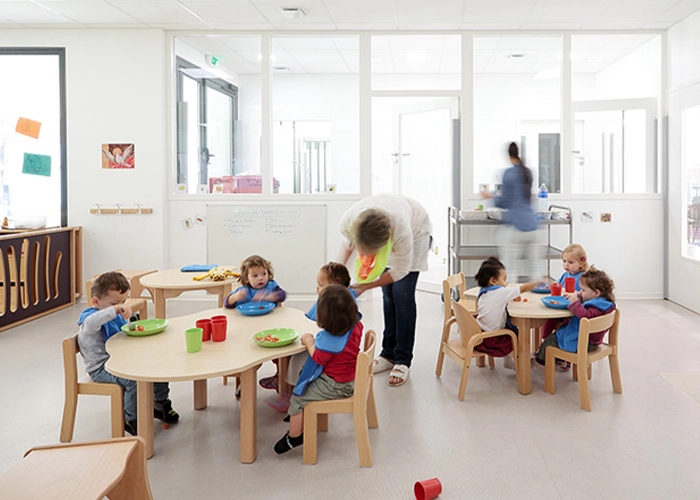
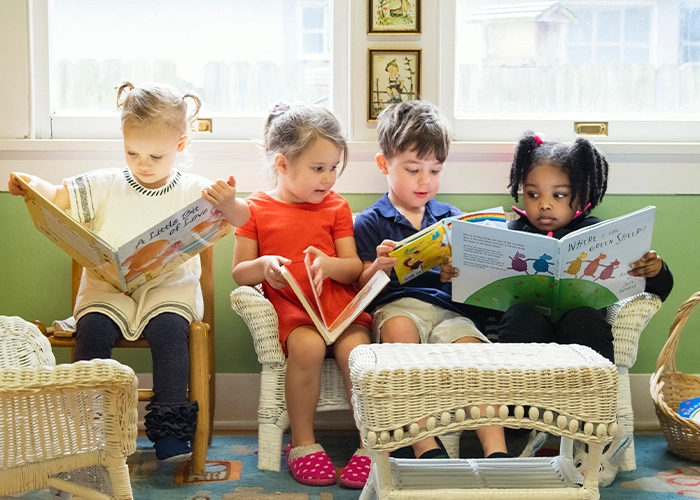
Create a Comfortable Reading Area
A comfortable reading area is a valuable addition to any kindergarten classroom setup. Design a cozy corner with soft seating and a variety of books. This encourages a love for reading and provides a quiet space for kids to relax. Use cushions, bean bags, or small armchairs to make the area inviting. Include diverse books to cater to different interests and reading levels. A well-designed reading nook can become a favorite spot for children, fostering a lifelong love of books and storytelling.
By following these strategies, you can create a kindergarten classroom setup that is both functional and inviting. Thoughtful furniture arrangements can enhance the learning experience, promote independence, and ensure the safety and well-being of the children.
Comprehensive Preschool Classroom Setup Checklist
To ensure your classroom covers all bases, here’s a practical preschool classroom setup checklist:
- Seating Arrangements: Ensure tables and chairs are child-sized and ergonomically designed for comfort.
- Storage Solutions: Use labeled bins for toys, art supplies, and learning materials to teach organizational skills.
- Multi-Functional Zones: Incorporate areas like a sensory table or a quiet zone for reflection.
- Safety Measures: Install corner protectors on furniture, and keep electrical outlets covered.
- Inclusive Design: Tailor elements for special needs, such as sensory-friendly materials in an autism preschool classroom setup.
This checklist allows educators to achieve the best preschool classroom setup, meeting developmental needs and aesthetic preferences.
What Materials Should Be Included in a Kindergarten Classroom?
Including suitable materials in your kindergarten classroom setup is essential for fostering a rich learning environment. The materials should cater to various aspects of a child’s development, from cognitive and motor skills to creativity and sensory processing. Here are some key categories of materials to consider:
Incorporate Educational Resources
To support cognitive and motor skill development, include a range of educational resources in your kindergarten classroom setup. Puzzles, educational toys, and interactive charts are excellent tools for engaging young minds. Puzzles help improve problem-solving and hand-eye coordination, while educational toys can introduce basic math, science, and language concepts. Interactive charts, such as those featuring the alphabet, numbers, or weather, provide visual aids that reinforce learning in a fun and interactive way.
Additionally, consider incorporating technology into your educational resources. Tablets with age-appropriate educational apps can offer interactive learning experiences. These apps often include games and activities that teach letters, numbers, and basic reading skills. However, balancing screen time with hands-on activities is essential to ensure a well-rounded education.
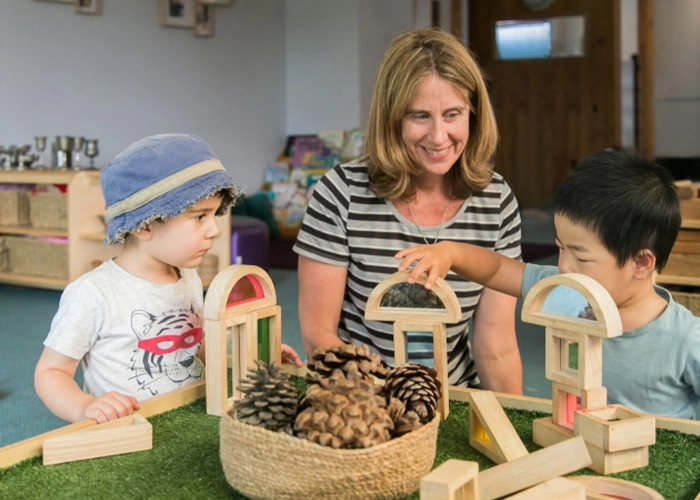
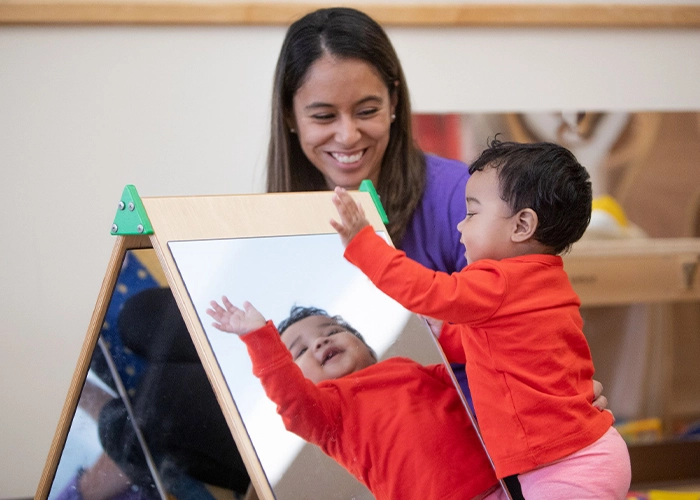
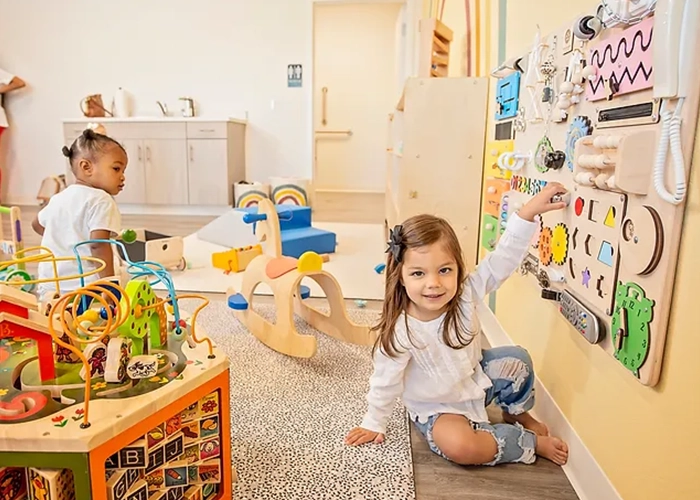
Provide Art Supplies
Art supplies are a must-have in a kindergarten classroom setup. Stock up on crayons, markers, paper, and other craft materials. An art station fosters creativity and helps children express themselves. Providing various materials encourages kids to explore different mediums and techniques, which can enhance their fine motor skills and artistic abilities. Include items like paint, glue, scissors (with safety features), and an assortment of colored paper to give children ample opportunities for creative expression.
Furthermore, consider setting up specific projects that change weekly or monthly to keep the art station exciting and new. This could include themed crafts that align with the children’s learning in other areas, such as seasonal projects or crafts related to a current lesson or book they are reading.
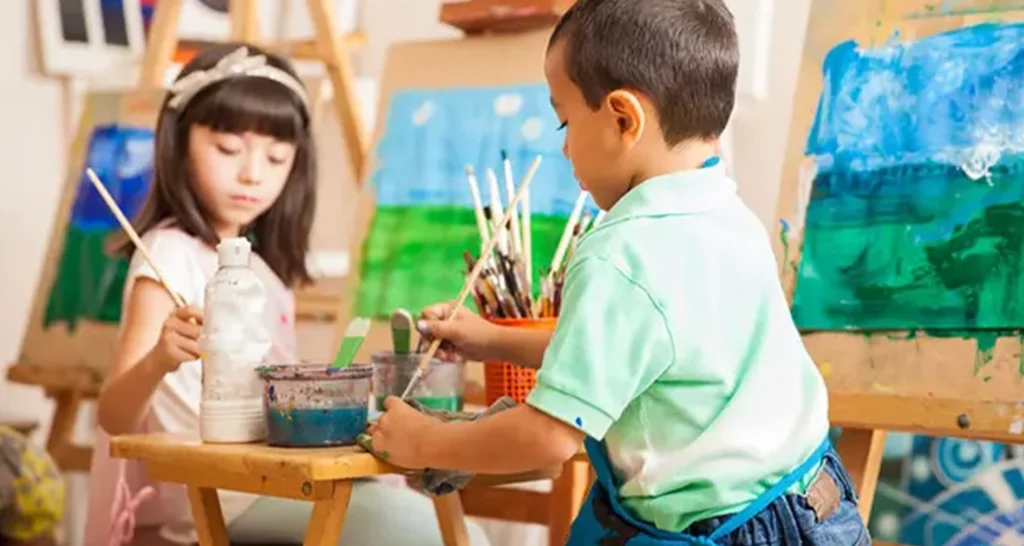
Include Sensory Activities
Sensory activities are crucial for young children’s development and should be an integral part of your kindergarten classroom setup. Set up a sensory table with sand, water, and textured objects. Sensory play helps improve children’s sensory processing skills and can be calming and stimulating. Consider rotating different sensory materials to keep the experience fresh and engaging. Items like kinetic sand, water beads, and textured fabrics can provide sensory experiences supporting tactile exploration and fine motor development.
In addition to a sensory table, consider incorporating sensory bins that can be easily changed and tailored to different themes. For example, a bin filled with rice and small hidden objects can become a treasure hunt, while a bin with dry pasta and scoops can help develop measuring skills. Sensory walls, with various textures and objects for children to touch and explore, can also be a great addition.
Organize for Efficiency
Organization is critical to maintaining an effective kindergarten classroom setup. Use labeled bins and shelves to keep materials organized. This makes it easy to find supplies and teaches children the importance of tidiness and responsibility. Clearly labeled storage areas help children learn where to put things away after use, fostering independence and a sense of order. Additionally, a well-organized classroom minimizes clutter and maximizes space, making the environment more conducive to learning and play.
Consider implementing a system where children can easily access and return materials independently. Color-coded bins and shelves can help younger children who are still learning to read. Also, creating visual guides or photo labels for where items belong can be extremely helpful. An organized classroom setup keeps the space tidy and enhances the overall learning experience by reducing time spent searching for materials and increasing time available for educational activities.
You can create a dynamic and supportive learning environment by incorporating these materials into your kindergarten classroom setup. Educational resources, art supplies, sensory activities, and efficient organization all play a vital role in promoting young children’s cognitive, creative, and sensory development. An effective kindergarten classroom setup will engage students, foster independence, and support their growth and development.
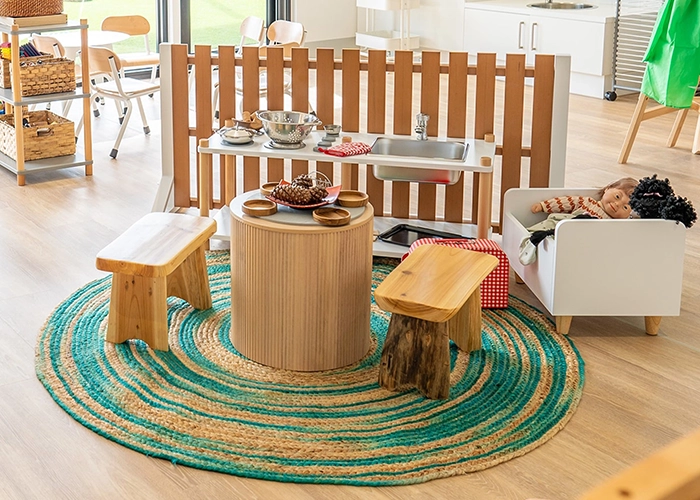
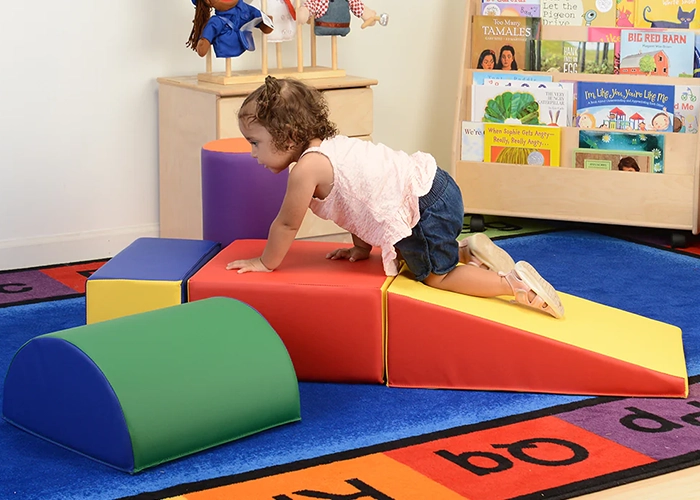
Tailoring Preschool Setups for Educational Philosophies
Different educational approaches like the Montessori preschool classroom setup, Reggio Emilia preschool classroom setup, and Waldorf preschool classroom setup emphasize unique learning and environment design aspects.
- Montessori: Open shelving, child-accessible tools, and hands-on learning stations are fundamental. These elements foster independence and exploration.
- Reggio Emilia: Large windows, natural light, and collaborative workspaces create a welcoming, exploratory environment.
- Waldorf: Incorporates organic materials and calming colors to stimulate creativity and imagination.
Whether planning for a small preschool classroom setup or larger spaces, integrating these philosophies can make your setup practical and inspiring.
What Are the Key Elements of an Effective Kindergarten Classroom Setup?
A practical kindergarten classroom layout facilitates learning and engagement. Prioritize safety and accessibility by ensuring the arrangement allows easy movement and supervision. This can be achieved by creating clear pathways and ensuring all materials reach the children.
Creating distinct zones for different activities is also essential. Each zone should have a specific purpose, such as a reading corner, art station, or play area. This structure helps children understand the expectations for each location and makes it easier to manage activities throughout the day.
Flexibility is another critical element of a successful classroom layout. The layout should be adaptable to accommodate different activities and learning experiences. This can be achieved by using movable furniture and storage solutions that can be easily rearranged. Incorporating ample storage options helps keep the classroom organized and teaches children the importance of tidiness and responsibility.
Seamless Transition to Kindergarten Classroom Setup
As children transition from preschool to kindergarten, the classroom setup should evolve to reflect their growing needs. A transitional kindergarten classroom setup typically requires more structured areas, including specific zones for subjects like math, science, and language arts. Use modular furniture that can be reconfigured to accommodate different activities, from cooperative learning to independent tasks. More formal seating arrangements and group workspaces will help bridge the gap between preschool classroom setup and the more academic focus of kindergarten.
As children progress from preschool to kindergarten, classroom setups need adjustments to accommodate their growing independence and academic demands. For an ideal kindergarten classroom setup:
- Incorporate More Structured Seating: Transition to group tables that promote collaboration.
- Introduce Thematic Learning Areas: Add zones for subjects like math, science, and language arts.
- Focus on Flexibility: Modular furniture allows for easy reconfiguration based on activities.
A well-thought-out kindergarten classroom setup checklist can help educators plan efficiently while keeping the environment engaging.
A preschool classroom setup checklist helps ensure that all areas of the classroom are optimized for learning. Start by establishing distinct learning zones: a circle time area, a sensory station, and a quiet space for individual activities. Child-sized furniture is essential for making the space accessible and comfortable for young learners. Another important feature is easy-to-access storage, which helps children maintain order and encourages independence. Safety features should be top priority—rounded corners on tables and soft materials in play zones are must-haves. The checklist should also address any specific needs, such as an autism preschool classroom setup, to ensure inclusivity for all children.
How Can Classroom Design Impact Children’s Learning and Behavior?
The design of a kindergarten classroom setup plays a crucial role in shaping children’s learning experiences and behaviors. A well-thought-out classroom design can create an environment that promotes engagement, focus, and positive social interactions. Here are some key ways in which the design of your kindergarten classroom setup can impact children:
- Enhancing Focus and Reducing Distractions: A well-organized kindergarten classroom setup can significantly improve children’s ability to focus. When the classroom is clutter-free, and materials are stored neatly, children can easily find what they need and concentrate on their activities. Designating specific areas for different activities, such as a reading corner, art station, and play area, helps children understand where each activity occurs and reduces distractions.
- Promoting Positive Behavior: The physical layout of the classroom can influence children’s behavior. Clear pathways and designated zones help children move smoothly from one activity to another, reducing opportunities for conflict and confusion. A well-structured environment with clear expectations and visual cues can guide children towards positive behaviors. For example, using colorful tape on the floor to mark boundaries or pathways can help children understand where they should and shouldn’t go.
- Encouraging Independence and Responsibility: A thoughtfully designed kindergarten classroom setup encourages children to take responsibility for their learning and environment. Children can access and return items independently by placing materials within easy reach and using labeled storage bins. This promotes independence and helps them develop organizational skills. Additionally, involving children in maintaining the classroom, such as tidying up after activities, fosters a sense of responsibility and ownership.

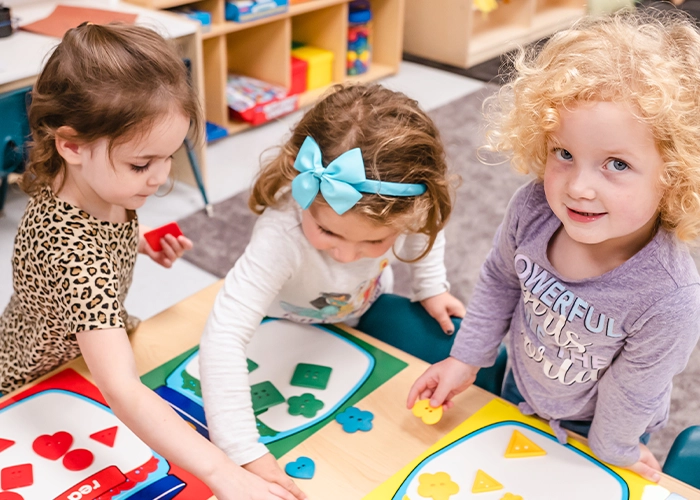
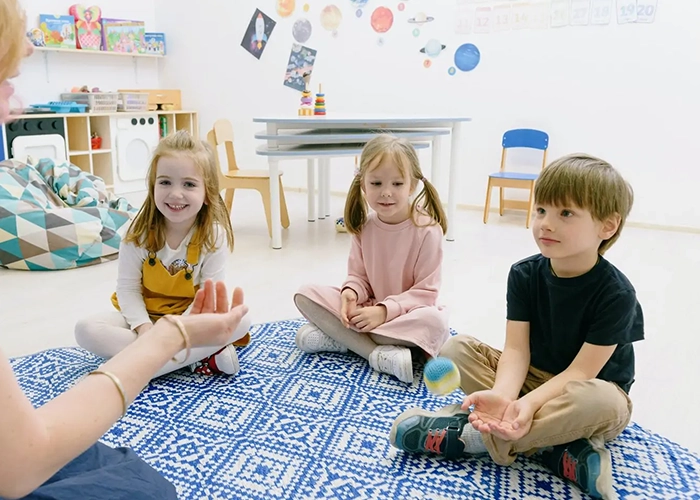
- Creating a Stimulating and Inviting Environment: The visual appeal of the classroom is also essential in a kindergarten classroom setup. Bright colors, cheerful decorations, and interactive displays can make the classroom more inviting and stimulate children’s curiosity. However, striking a balance is essential—too many decorations can become overwhelming and distracting. Incorporating natural elements, such as plants or nature-themed decorations, can create a calming atmosphere that supports learning.
- Kindergarten Classroom Setup Tips for Small Spaces: In a small kindergarten classroom setup, maximizing space is essential for a functional and organized environment. Use modular furniture like foldable tables and chairs that can be stored easily. Vertical storage solutions such as wall-mounted shelves or hanging organizers can help free up floor space while keeping materials accessible. Designate learning zones in the classroom, such as a reading corner, an art station, and a quiet reflection area. This strategy ensures that every inch of space is used effectively, promoting both engagement and ease of movement.
- Creating a Montessori Preschool Classroom Setup: A Montessori preschool classroom setup promotes self-directed learning and independence, aligning with the Montessori philosophy. The setup features low, open shelves where children can easily access materials, from books to art supplies. Each area is designed to encourage specific types of learning, such as fine motor skills at an art station or problem-solving at a construction zone. Tables and chairs should be child-sized and lightweight for easy movement. Montessori-inspired furniture is often simple, natural, and durable, fostering an environment where children can choose their activities and engage in self-discovery.
- Supporting Different Learning Styles: A flexible kindergarten classroom setup can accommodate various learning styles and needs. For instance, some children may thrive in a quiet reading corner, while others prefer hands-on activities at an art station or sensory table. Providing a variety of learning spaces allows children to choose the environment that best suits their individual learning preferences. This flexibility can enhance engagement and help each child reach their full potential.
- Fostering Social Interaction and Collaboration: The classroom design can also facilitate social interaction and collaboration among children. Arranging tables and seating in a way that encourages group work and peer interaction can help children develop social skills and learn from one another. Collaborative spaces, such as group tables or a circle-time area, allow children to engage in discussions, share ideas, and work together on projects.
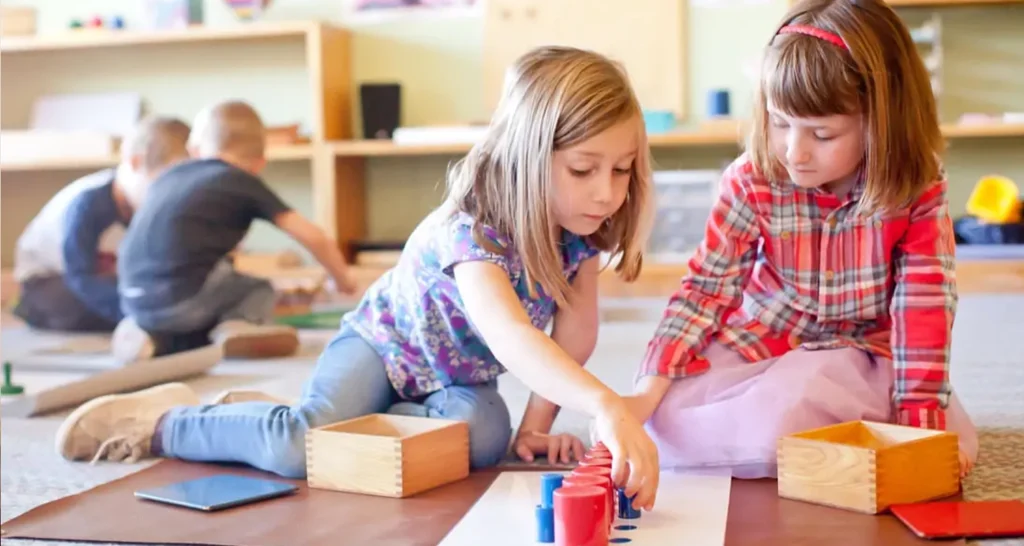
- Enhancing Safety and Comfort: Safety and comfort are paramount in a kindergarten classroom setup. Ensure that furniture is child-sized and free of sharp edges to prevent injuries. Comfortable seating and ergonomic furniture can help children maintain good posture and focus on tasks. Adequate lighting and ventilation also contribute to a healthy, relaxed learning environment, reducing fatigue and enhancing overall well-being.
- Integrating Technology Thoughtfully: Incorporating technology into the kindergarten classroom setup can offer additional learning opportunities, but it should be done thoughtfully. Interactive whiteboards, tablets, and computers can provide engaging educational content, but balancing screen time with hands-on activities is essential. Ensuring technology is accessible and used in moderation can enhance learning without overwhelming young minds.
- Reggio Emilia Preschool Classroom Setup: The Reggio Emilia preschool classroom setup emphasizes the importance of the learning environment as a “third teacher.” This philosophy encourages an interactive and dynamic setup where children can explore and collaborate. The space is filled with natural materials like wood, fabric, and plants, fostering a connection to nature and providing rich sensory experiences. Reggio Emilia preschool classroom setups are designed to be flexible, with furniture that allows for movement and group work. Walls often feature children’s artwork and open-ended materials that invite creativity. In these classrooms, teachers are viewed as partners who observe and support children’s ideas and projects.
By carefully considering these aspects of classroom design, you can create a kindergarten classroom setup that supports academic learning and promotes positive behaviors and social-emotional development. A well-designed classroom environment can significantly affect how children interact with their surroundings, peers, and educational experiences.
When designing a preschool classroom setup for children with special needs, especially those on the autism spectrum, the environment must be both calming and structured. Autism preschool classroom setups often include sensory-friendly features like soft lighting, noise-canceling panels, and tactile walls to promote focus and reduce overstimulation. Visual schedules and color-coded areas can provide helpful cues for children to follow routines. Furniture should be flexible and adjustable to accommodate various sensory needs, and specific zones for activities like art, quiet reflection, or sensory play are essential. These adaptations help foster an inclusive environment that supports the individual needs of all children.
Home-Based Preschool and Daycare Classroom Setup
For parents setting up a learning space at home, a practical home preschool classroom setup can maximize small spaces while encouraging creativity. Similarly, daycare classroom setup ideas blend functionality and playfulness:
- At Home: Use foldable furniture for flexibility, wall-mounted organizers to save space, and DIY educational tools for budget-friendly learning.
- At Daycare: Prioritize safety with rounded furniture edges, use durable materials, and incorporate sensory play zones to cater to toddlers’ needs.
For those setting up a home preschool classroom setup, the space must balance learning and comfort. Start by creating learning zones like a cozy reading nook, a creative arts station, and a small math corner. Choose multi-functional furniture that can easily be reconfigured, such as foldable tables and stackable chairs. Wall-mounted storage helps keep materials organized without taking up floor space. Adding a personal touch, such as framing your child’s artwork or setting up a rotating book display, can make the space feel more welcoming and supportive of their learning.
Both setups should foster an inviting atmosphere that blends education with play.
Don’t just dream it, design it! Let’s chat about your custom furniture needs!
What Are Some Cost-Effective Ways to Set Up a Kindergarten Classroom?
Setting up a kindergarten classroom on a budget can be challenging, but it’s entirely possible with some creativity and strategic planning. Here are several cost-effective ways to create a functional and engaging kindergarten classroom setup:
Prioritize Essential Items
Start by identifying the essential items needed for your classroom. Focus on key pieces of furniture such as tables, chairs, and storage units. Look for versatile furniture that can serve multiple purposes. For example, tables that can be used for group activities and individual work can save space and money.
Utilize Second-Hand and Donated Items
Consider sourcing second-hand or donated furniture and materials. Many organizations and online marketplaces offer gently used classroom supplies at a fraction of the cost. Check with local schools, community centers, and parent groups for donations. Often, you can find high-quality items that have been well-maintained.
DIY Projects
Do-it-yourself projects can be a cost-effective way to enhance your classroom setup. Simple handmade decorations, storage solutions, and learning aids can add a personal touch without breaking the bank. For instance, you can create colorful posters and signs using inexpensive materials like construction paper and markers. Also, making your own sensory bins or activity boards can be fun and economical.
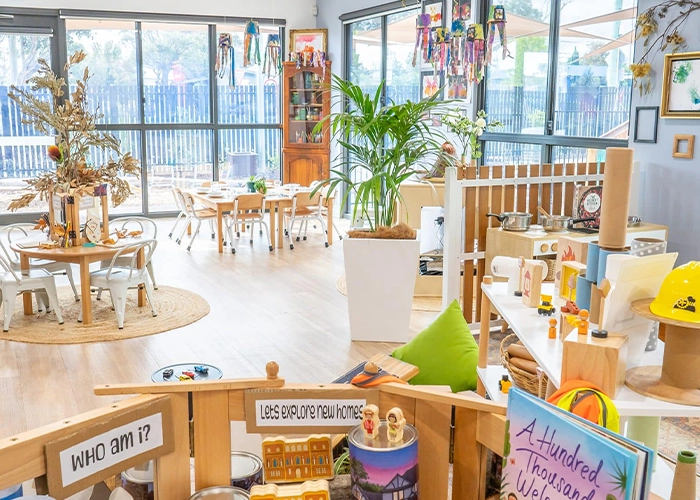
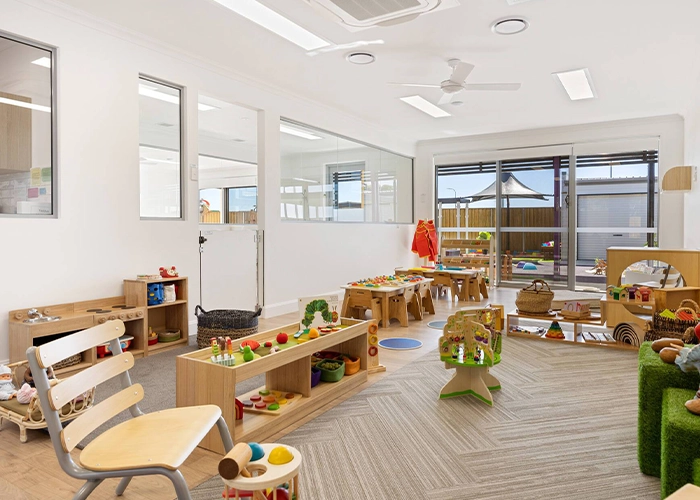
Our Cost-Effective Solutions
At Xiair, we provide high-quality, affordable kindergarten classroom setup solutions. Our products are designed to meet the highest safety and durability standards while remaining budget-friendly. Here are some of the advantages we offer:
- Competitive Pricing: We understand the budget constraints faced by many educational institutions. That’s why we offer our products at competitive prices without compromising quality. Our factory-direct pricing ensures that you get the best value for your money. By eliminating middlemen, we can pass the savings directly to you, making setting up your classroom within your budget more manageable.
- Customization Options: We provide customizable options to meet the specific needs of your classroom. Whether you need furniture in particular sizes, colors, or designs, we can tailor our products to suit your requirements. This flexibility ensures you get precisely what you need without overspending on unnecessary features.
- Durable and Easy-to-Clean Materials: Our kindergarten furniture is made from durable materials, ensuring longevity and ease of maintenance. Investing in high-quality products means fewer replacements and repairs over time, saving you money in the long run. Our child-sized furniture is designed to withstand the wear and tear of daily use while providing a safe and comfortable environment for young learners.
- Efficient Organization Solutions: An organized classroom is critical to maximizing efficiency and minimizing costs. Use labeled bins and shelves to keep materials organized and easily accessible. This helps maintain a tidy classroom and teaches children the importance of tidiness and responsibility. Clear labels and color-coded storage solutions can make it easier for young children to find and put away materials, reducing the likelihood of lost or damaged items.
- Multi-Purpose Furniture: Invest in multi-purpose furniture that can adapt to various activities and uses. For example, adjustable tables and chairs can accommodate different age groups and activities, from arts and crafts to group discussions. This versatility allows you to make the most of your space and budget by reducing the need for specialized furniture.
- Long-Term Investment: While it might be tempting to opt for the cheapest options available, it’s essential to consider the long-term value of your purchases. High-quality, durable items may have a higher upfront cost but will save you money over time by reducing the need for frequent replacements. At Xiair, we offer products built to last, providing a reliable and cost-effective solution for your kindergarten classroom setup.
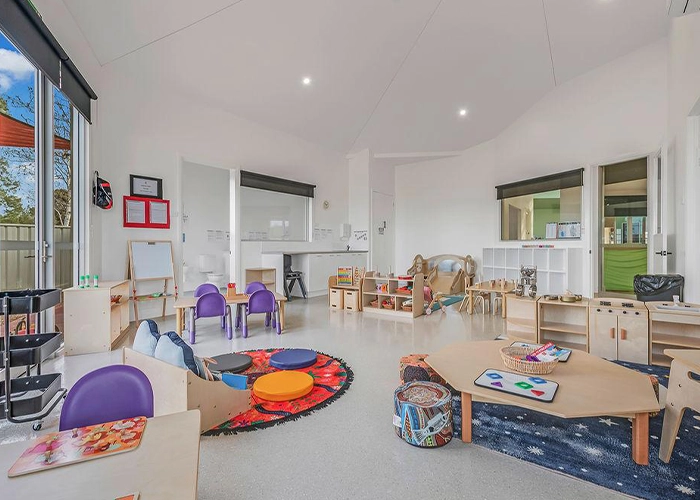
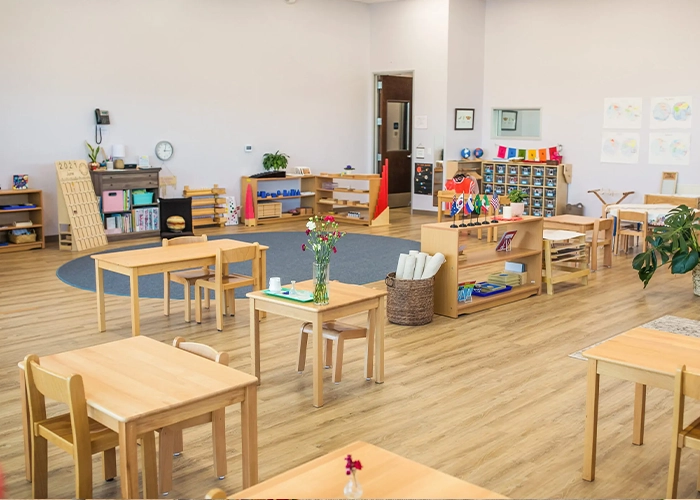
Creating an excellent kindergarten classroom setup involves thoughtful planning and attention to detail. By focusing on safety, accessibility, engaging materials, and a welcoming environment, you can provide a space where children love to learn and grow. A practical setup enhances learning and fosters positive behavior and a sense of community. With these tips, you can ensure your kindergarten classroom is functional and inspiring, setting the stage for a successful educational experience for your young learners.
Creating a cost-effective preschool classroom setup doesn’t mean sacrificing quality or creativity. Start by sourcing gently used or donated items, like tables and bookshelves, from local organizations or online marketplaces. Repurpose household items to create educational tools—sensory play bins can be made from simple materials, and cardboard can be used to create activity stations. DIY art displays and bulletin boards can be inexpensive yet impactful ways to enhance the classroom atmosphere. By focusing on sustainability and resourcefulness, teachers can create an engaging and functional learning environment without breaking the budget.
Summary of Key Classroom Setup Ideas
This section provides a quick reference to the essential elements of an effective classroom setup for young learners, focusing on various themes and practical approaches.
| Classroom Area | Key Considerations | Objective |
|---|---|---|
| Learning Zones | Create distinct areas such as circle time, reading nook, art corner, and sensory play zone. | To foster various types of learning experiences (e.g., social, creative, academic). |
| Safety Features | Use child-safe furniture with rounded edges, secure shelving, and non-toxic materials. | Ensure a secure environment that minimizes risks and encourages safe exploration. |
| Interactive & Hands-On Tools | Include sensory materials (e.g., textured toys, water play stations) and interactive learning tools (e.g., puzzles, STEM kits). | Promote tactile engagement, motor skill development, and problem-solving. |
| Flexible Furniture | Opt for lightweight, moveable furniture such as stackable chairs and tables that can be reconfigured for various activities. | To allow easy transitions between different activities and create a dynamic environment. |
| Storage Solutions | Incorporate easily accessible and organized storage options like bins, shelves, and carts to keep learning materials within reach. | Encourage independence and reduce clutter to maintain focus. |
| Quiet Space | Dedicate an area with calming elements like soft lighting and cushions for children who need a break or quiet time. | Provide a space for children to relax, recharge, or work quietly when needed. |
| Theme-Based Setup | Use thematic areas, such as a science corner, reading area, or art station, to create a cohesive learning environment. | Stimulate creativity and offer opportunities for specialized learning experiences. |
| Montessori-Inspired Design | Low shelves with open-ended materials for independent exploration and a sense of order and autonomy. | Encourage self-guided learning and foster a love for exploration. |
| Reggio Emilia Approach | Integrate natural elements, open-ended materials, and collaborative spaces to promote creativity and teamwork. | Support group work, creativity, and problem-solving through dynamic, student-centered spaces. |
| Budget-Friendly Ideas | Repurpose old furniture, create DIY storage solutions, and use recycled materials for decorations and learning tools. | Maximize resources while creating an engaging and functional learning space. |
FAQs: How to Master Classroom Setup for Children
- What makes the best preschool classroom setup?
A well-designed preschool classroom setup incorporates a balance of safety, engagement, and accessibility. One key feature is to include child-sized furniture that fits the needs of young learners. This ensures comfort and promotes independence as children can interact with their surroundings more effectively. Also, creating multi-sensory spaces that appeal to different learning styles is essential. For instance, introducing sensory materials such as textured balls, play dough, or sensory bins filled with beans or rice helps children explore tactile learning. Integrating interactive learning tools like educational puzzles, building blocks, or STEM toys allows children to engage in hands-on learning, while storybooks and imaginative play corners nurture creativity and language development.
Additionally, the room layout should prioritize easy access to materials and minimize clutter to reduce distractions. A preschool classroom setup checklist can help educators ensure all essential elements are in place—focusing on structure and freedom for children to explore, create, and learn independently. - How to set up a kindergarten classroom on a budget?
Setting up a kindergarten classroom on a budget doesn’t mean compromising quality or engagement. One of the most cost-effective strategies is repurposing existing furniture and classroom materials. Items like tables, chairs, and shelves can be refurbished with a fresh coat of paint or re-organized to meet the needs of a new school year. DIY decorations like bulletin boards made from recycled materials or handmade posters can add a personal touch while saving money. Look for affordable, durable, multipurpose items that can be used in multiple learning areas. For example, storage bins and shelves can organize art supplies, books, or toys, ensuring the space remains tidy and functional.
When planning your classroom setup for preschool or kindergarten, consider donated or gently used materials from local organizations or online marketplaces. By incorporating creative thinking and resourcefulness, creating a vibrant and compelling learning environment is possible without breaking the budget. - What should a daycare classroom setup focus on?
A daycare classroom setup should be designed with safety, engagement, and age-appropriate activities as its top priorities. One crucial aspect is incorporating soft mats and playful furniture to provide children with a secure and comfortable environment. A sensory play zone filled with sand, water, or textured toys supports hands-on learning and fine motor development. Interactive toys encouraging imaginative play are vital for building language skills and social development.
In a preschool classroom setup, create zones that allow children to engage with materials while ensuring safety freely. To nurture creativity and self-expression, these spaces should include quiet areas, dramatic play stations, and art corners. Providing safe, easy-to-clean materials like washable markers or non-toxic paints is essential in maintaining a healthy learning environment.
For daycare setups, storage solutions like low, accessible bins and shelves help ensure that materials are within reach, enabling children to practice independence. Together, these elements create an environment that feels nurturing, structured, and ready for the children to explore. - How do you manage space in small preschool or kindergarten setups?
Managing space in small preschool or kindergarten classroom setups can be challenging, but with the right strategies, it’s possible to create an organized and efficient learning environment. Start by utilizing vertical storage such as wall-mounted shelves, hanging organizers, or storage bins that can be tucked away when unused. This maximizes the available floor space and reduces clutter.
In a small classroom setup for preschool or kindergarten, opt for collapsible tables and stackable chairs that can be moved or stored easily to make room for different activities. Multi-functional furniture that serves multiple purposes—like a bench with built-in storage or a table that doubles as an art station—can be a great solution.
To further optimize space, divide the room into flexible learning zones. These zones can serve various daily functions—creative play, group work, and individual activities—without requiring separate rooms. Flexibility in furniture arrangement and storage is key to ensuring a small kindergarten classroom setup is practical and engaging for young learners. Less and more transparent organization is needed to maximize limited space.
